Black diamonds, also known as Carbonados, possess an enigmatic allure that appeals to both collectors and enthusiasts of bold jewelry. Nowadays, black diamonds have gained popularity as a choice for engagement rings and men’s bands.
When it comes to diamonds, one of the initial considerations is often the price. You might be curious about the value of a 1-carat black diamond. The price can vary significantly depending on the specific type of black diamond, ranging from a few hundred dollars to several thousand dollars.
In this comprehensive article, we have compiled all the essential information about the factors influencing the pricing of black diamonds. So, without any further delay, let’s delve into the fascinating world of black diamonds.
DESIGN YOUR OWN ENGAGEMENT RING: START WITH A SETTING OR START WITH A DIAMOND. IT’S REALLY UP TO YOU!
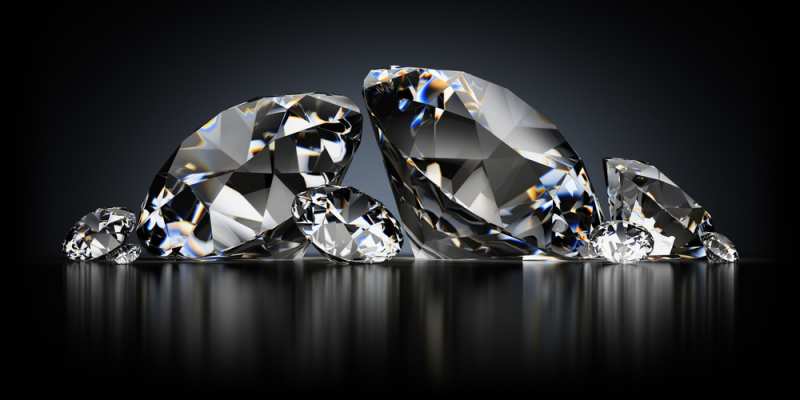
Formation Process Of Black Diamonds
The origin of black diamonds, while formed under similar conditions as colorless diamonds, still poses a mysterious aspect regarding the abundance of inclusions that lend them their unique black coloration.
A more conventional explanation attributes black diamonds to high-pressure conditions in the Earth’s crust, accompanied by dark graphite inclusions. However, this theory fails to account for the predominantly limited locations of black diamond deposits in Brazil and the Central African Republic.
On the other hand, a more captivating theory proposes that natural black diamonds were once part of an ancient star that exploded billions of years ago. After drifting through space for eons, these diamonds descended to Earth as fragments of meteorites.
Despite not being as rare as fancy pink or yellow diamonds, natural black diamonds remain exceptionally scarce, even more so than colorless diamonds. Interestingly, black diamonds can be relatively more affordable compared to their colorless counterparts.
The relatively lower price of black diamonds is attributed to the relatively limited demand they have received compared to white and other colored diamonds. However, this trend is gradually changing, as their popularity has surged in recent years, resulting in increased prices.
Unfortunately, with the growing demand for black diamonds, the market has seen a rise in treated black diamonds. Consequently, the majority of diamonds available on the market are not authentic or rare.
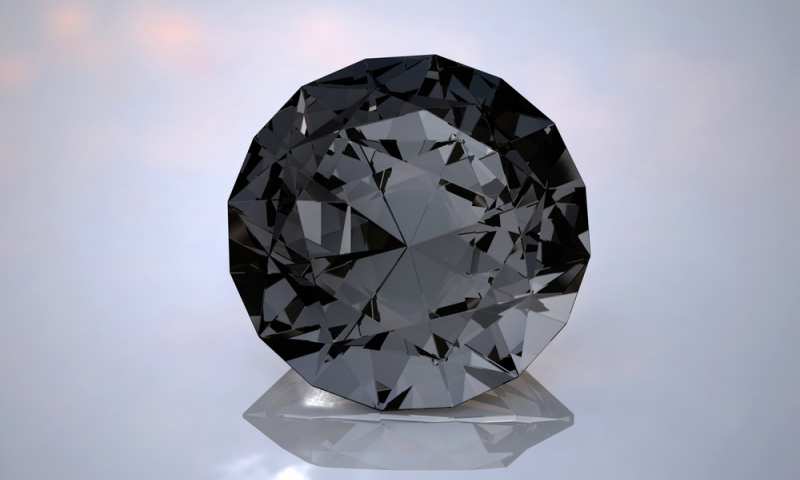
Are Black Diamonds A Good Investment?
Although black diamonds have traditionally not been considered ideal for investment purposes, their popularity has been steadily rising in recent years. As a result, their prices have increased and are now closer to those of “white” diamonds.
If you’re considering investing in natural black diamonds, it’s advisable to look for stones of significant size or those with distinctive features that can enhance their value. These factors can contribute to their appeal in the market.
However, it’s crucial for investors to exercise caution when purchasing black diamonds, as the growing demand has also given rise to a market for artificially treated black diamonds. These treated stones are considerably cheaper and of lower quality compared to their natural counterparts.
If you’re uncertain about making the right decision when buying black diamonds for investment purposes, it’s recommended to consult professional jewelers or diamond experts. They can provide valuable insights and offer pre and post-sale valuation services. This ensures that you make an informed purchase and secure a favorable deal when it comes time to sell.
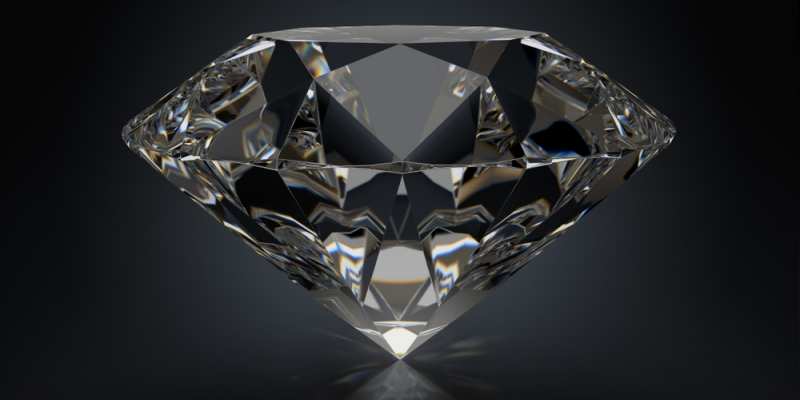
Black Diamonds’ Pricing
Natural black diamonds offer relatively affordable pricing compared to the rarer fancy colored diamonds and are on par with white diamonds in terms of cost.
The price range for a fancy black diamond typically falls between $3,000 and $5,000 per carat. This means that an average 1-carat engagement ring with a black diamond would be priced around $3,000.
Since cutting natural black diamonds is more challenging than cutting other diamonds, a well-cut black diamond with exceptional craftsmanship may have a higher price than the average black diamond. Other factors such as surface smoothness and porosity also influence the price of a natural black diamond.
In contrast, treated black diamonds are considerably cheaper than their natural counterparts due to lower demand and their relative abundance. If you are considering purchasing a treated black diamond, you can expect to pay around $300 per carat.
The table below provides a comparison of prices for treated black diamonds, natural black diamonds, and colorless white diamonds, both per carat and per diamond, to give you a better understanding of their cost.
| 0.50 carat | 0.50 carat | 1.00 carat | 1.00 carat | 2.00 carat | 2.00 carat | |
| Price per carat | Price per diamond | Price per carat | Price per diamond | Price per carat | Price per diamond | |
| Treated Black Diamonds | $200 | $100 | $300 | $300 | $400 | $800 |
| Natural Black Diamonds | $2,000 | $1,000 | $3,000 | $3,000 | $3,000 | $6,000 |
| Colorless White Diamonds | $2,500 | $1,500 | $5,000 | $5,000 | $9,500 | $19,000 |
As the size of the gem increases, the price per carat of 1-carat natural black diamonds remains relatively consistent at approximately $3,000 per carat. However, the disparity in price between natural black diamonds and colorless white diamonds becomes more significant as the size of the gem grows.
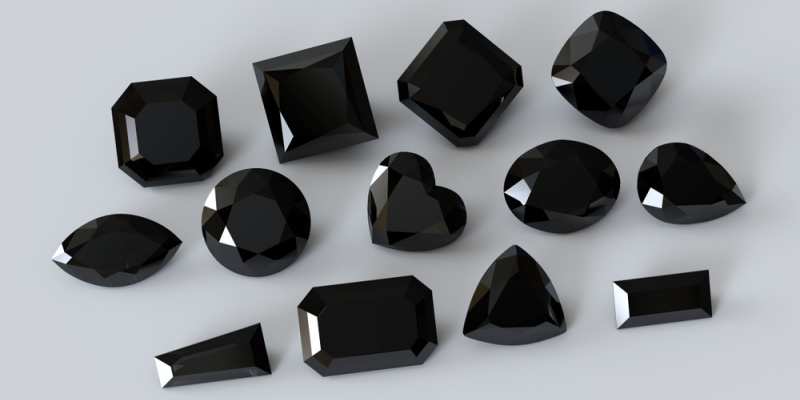
Factors That Impact The Price Of Black Diamonds
Color:
Natural black diamonds have a fixed intensity level known as fancy black, unlike other colored diamonds that have varying intensities. The black color of black diamonds makes them entirely opaque, without any variation in hue, intensity, or tone. Consequently, the grading systems used for other colored diamonds do not apply to natural black diamonds. The lack of sparkle in black diamonds lends them a refined and understated quality that is well-suited for wedding rings.
Clarity:
Due to the abundance of inclusions within natural black diamonds, they do not refract light in the same way as other colored diamonds. As a result, clarity is not a relevant factor in determining the value and quality of black diamonds. Although inclusions contribute to the color of black diamonds, they do not receive clarity grades.
Cut:
Cutting black diamonds is a highly complex process due to the densely packed inclusions that give them their black color. Black diamonds with superior cuts hold greater value because of the exceptional skill required to cut them. Therefore, the cut is a crucial factor in determining the value of a black diamond.
Black diamonds are not commonly available in the same variety of cuts as other fancy colored diamonds due to the challenges involved in cutting them. If you come across a well-cut black diamond with a unique design, it may be worth considering as it could be a promising investment in the future. The most popular shapes for black diamonds include round, princess, pear, and oval. When purchasing a black diamond, ensure that its surfaces are smooth and free from visible blemishes.
On the other hand, treated black diamonds are easier to cut since they lack the inclusions found in natural black diamonds. However, treated black diamonds are often made from lower-quality diamonds, resulting in a lower overall quality even if the cut is of higher quality.
Carat:
Carat refers to the weight of a diamond rather than its size. As black diamonds are denser than other fancy colored diamonds, diamonds of the same carat weight may appear smaller in size. For example, a 1-carat natural black diamond will appear significantly smaller compared to a 1-carat colorless white diamond.
Polish:
Due to their opaque nature, natural black diamonds do not sparkle like other fancy colored diamonds. However, well-polished natural black diamonds possess a glossy finish that imparts a unique shine among fancy colored diamonds.
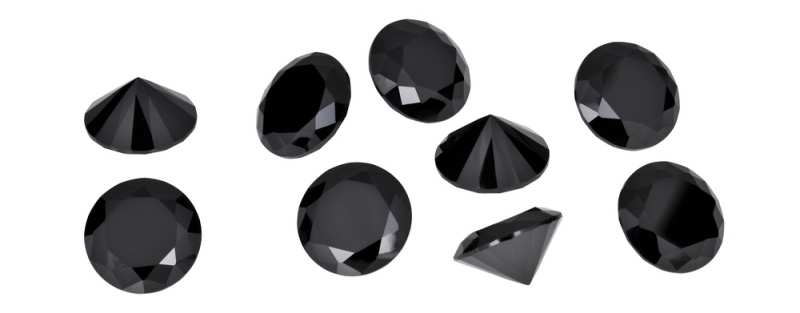
Natural Vs. Treated Black Diamonds
Black diamonds available in the market can be classified into two categories: natural black diamonds and treated black diamonds.
Natural black diamonds are exceptionally rare and tend to be expensive. With the growing demand for black diamonds, the availability of treated black diamonds has also increased.
Natural black diamonds often possess a more porous structure compared to treated black diamonds. This characteristic allows them to absorb more light, resulting in a higher level of opacity.
However, the majority of black diamonds on the market are treated black diamonds. These diamonds undergo treatments such as high pressure and high temperature (HPHT) or chemical vapor deposition (CVD) to achieve the black coloration.
It is important to note that treated black diamonds are not fake; they are created using genuine, colorless diamonds. However, the stones selected for treatment are typically of lower quality, as high-quality colorless diamonds would not be economically viable for such processes.
Unfortunately, treated black diamonds are sometimes misleadingly marketed as natural black diamonds.
Determining the authenticity of a black diamond without specialized equipment can be challenging. If a black diamond’s price seems too good to be true, it is likely an artificially treated black diamond.
To ensure you are purchasing an authentic natural black diamond, it is recommended to buy from sources that provide certificates from recognized and trusted gemological institutes such as GIA (Gemological Institute of America) or AGS (American Gem Society).
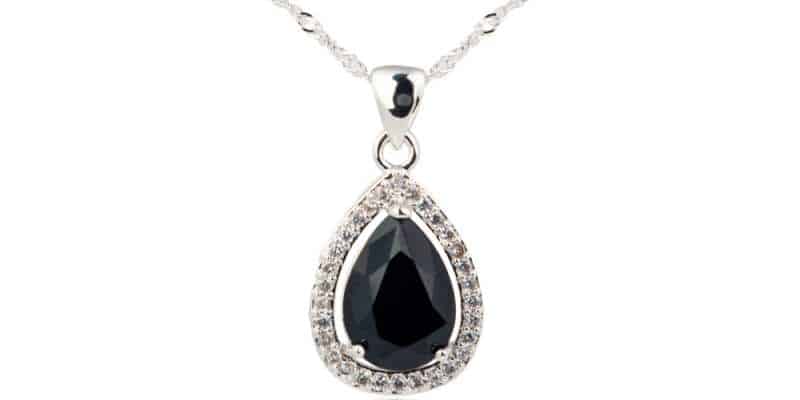
Color Enhanced Black Diamonds
Color-enhanced black diamonds are diamonds that have undergone a radiation treatment to achieve a black color. Typically, the diamond is exposed to a certain level of radiation that alters its hue to a dark green, appearing black to the naked eye.
Similar to treated black diamonds, color-enhanced black diamonds are generally less valuable and less opaque compared to natural black diamonds. However, they can still exhibit stunning beauty and are frequently used in wedding rings.
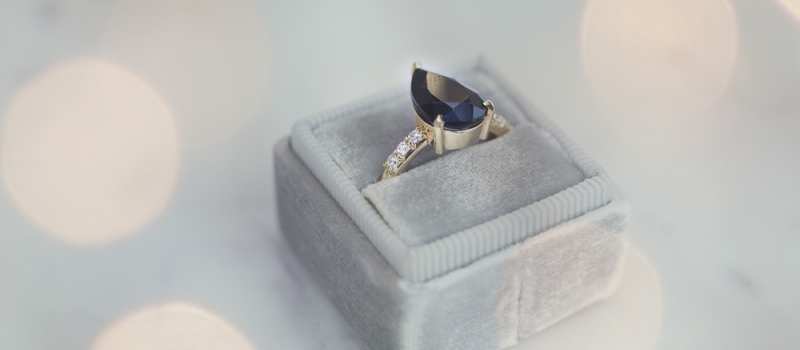
Black Diamond Engagement Ring Settings
Black diamonds make a striking choice for an engagement ring, guaranteed to capture attention. To create a truly captivating piece, it is crucial to select a suitable setting that complements the black diamond’s unique beauty and reflects the wearer’s style and personality.
One option is a halo setting, where the black diamond is surrounded by smaller colorless diamonds, creating a magnificent ring that exudes elegance. Alternatively, a side stone setting can be chosen to accentuate the black diamond by placing two colorless diamonds on either side, drawing attention to its centerpiece.
For those who want to emphasize the black diamond as the focal point, a solitaire setting is ideal. Consider using platinum or white gold to provide a contrasting backdrop that enhances the stone’s black color, creating a visually stunning ring.
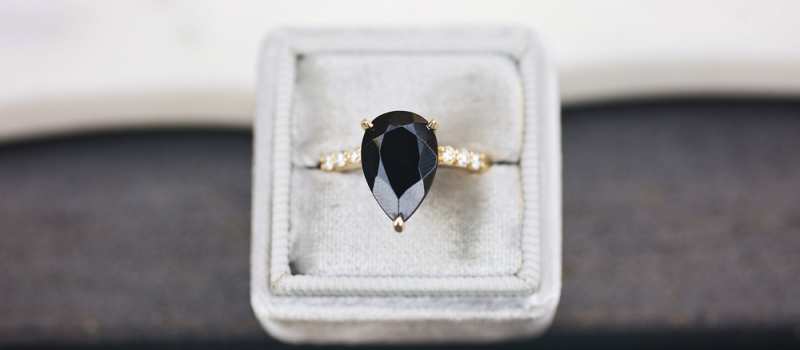
Final Word
To determine the value of a 1-carat black diamond, it’s important to differentiate between natural black diamonds and artificially treated black diamonds.
For natural black diamonds, the price of a 1-carat stone is typically around $3000. These diamonds acquire their black color through natural processes during their formation.
In contrast, artificially treated black diamonds, which undergo processes to achieve their black color, are priced at around $300 for a 1-carat diamond.
When assessing the value of a black diamond, factors such as color and clarity are not significant. However, the cut of the diamond plays a crucial role. Black diamonds are challenging to cut, so those that are exceptionally well-cut will command a higher price.


